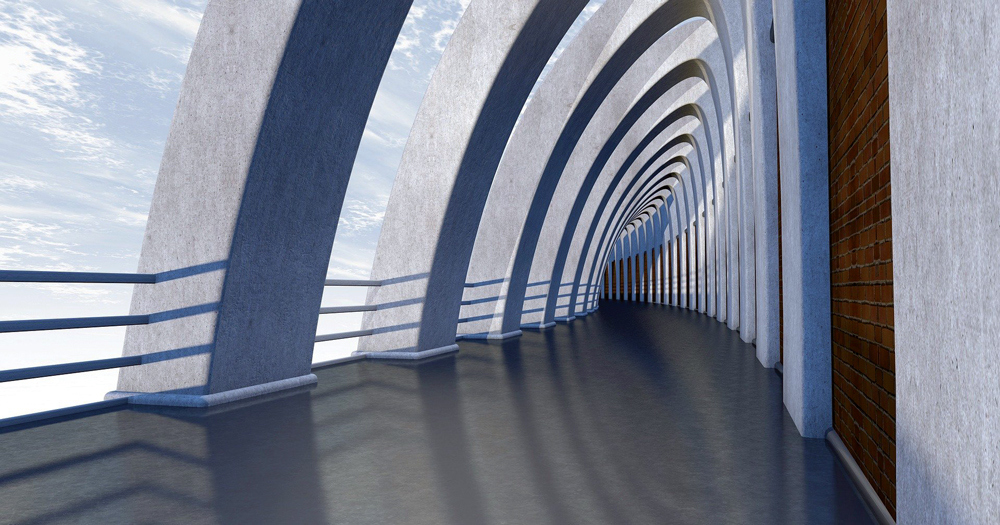TOWARDS a GREENER FUTURE
The concept of Green Building is gathering pace in the current global scenario as the global warming and the emission-related climate changes are adversely impacting the weather patterns world over. Green building or sustainable building refers to both a structure and the application of processes that are environmentally responsible and resource-efficient throughout a building's life-cycle:

The concept of Green Building is gathering pace in the current global scenario as the global warming and the emission-related climate changes are adversely impacting the weather patterns world over. Green building or sustainable building refers to both a structure and the application of processes that are environmentally responsible and resource-efficient throughout a building's life-cycle: from planning to design, construction, operation, maintenance, renovation, and demolition. This requires close cooperation of the contractor, the architects, the engineers, and the client at all project stages. The Green Building practice expands and complements the classical building design concerns of economy, utility, durability, and comfort. In doing so, the three dimensions of sustainability, people and profit across the entire supply chain need to be considered.
According to World Green Building Council, a 'green' building is a building that, in its design, construction or operation, reduces or eliminates negative impacts, and can create positive impacts, on our climate and natural environment. Green buildings preserve precious natural resources and improve our quality of life.
Green features
The important green features that make a building 'green' include:
- Efficient use of energy, water and other resources
- Use of renewable energy, such as solar energy
- Pollution and waste reduction measures, and the enabling of re-use and recycling
- Good indoor environmental air quality
- Use of materials that are non-toxic, ethical and sustainable
- Consideration of the environment in design, construction and operation
- Consideration of the quality of life of occupants in design, construction and operation
- A design that enables adaptation to a changing environment
Any building can be a green building, whether it's a home, an office, a school, a hospital, a community centre, or any other type of structure, provided it includes features listed above.
A green home can have tremendous benefits, both tangible and intangible. The immediate and most tangible benefit is up to 30% reduction in electricity bills and up to 50% reduction in water consumption, as compared to conventional projects. Green Buildings also lead to improved health & wellbeing of occupants.
The IGBC green building rating system addresses green features under the following major categories:
- Water and energy conservation
- Use of Certified green products
- Effective management of construction & demolition waste
- Futuristic provisions such as e-vehicle charging
- Indoor environmental quality
Water conservation
Water is essential for human life; in fact, it can be considered fuel for humans. Almost 70 percent of the earth is covered with water and take this fact for granted, but the fact is that just 2 percent is fresh water. This lays emphasis for sustainability in water and the importance of water conservation. Owing to the depleting natural resources, it is imperative to conserve water. Water efficiency is a significant chunk of green buildings whose strategies and technologies lessen the amount of potable water consumed in buildings. Water efficiency strategies in green building practices have become paramount to both new and existing construction efforts.
Energy conservation
Energy efficiency is perhaps the most important element of green building. Higher levels of energy efficiency reduce carbon emissions - both from power plants and the home's own energy systems. According to the EPA, a single ENERGY STAR qualified home can keep 4,500 lbs of greenhouse gases out of the air each year.
Green buildings certified by the Indian Green Building Council (IGBC) results in energy savings of 40-50% and water savings of 20-30% compared to conventional buildings in India.
reuse of C&D waste
Reuse of materials is an efficient way to reduce the use of energy intensive materials. Instead of discarding tonnes and tonnes of wastes from the factories and homes, some part of it could be used for creative construction. This will help in achieving waste reduction and help us move one step forward towards the sustainable environment.
It is a fact that the natural resources for building construction are depleting fast. Recycling and reusing of waste materials play an important and divine role in conserving the valuable natural resources and thus keeping the nature alive in the long term. Apart from using sustainable materials in construction, use of waste materials play an important role today to reduce accumulation of waste and save natural resources. Today, there is a lot of construction and demolition (C&D) wastes are being generated after the growing construction activities and infrastructure development. But the recycling and reusing of these C&D wastes is bare minimum. According to a Centre for Science and Environment (CSE) report, India recycles just one per cent of its C&D waste.
Renewable energy
With green building's focus on sustainability and green energy, it is no surprise that solar power systems play a big role in their construction. The sun is an unlimited resource that can be used to generate power throughout the world. Green buildings take full advantage of this by utilizing solar panels and renewable power whenever possible. An active solar energy system (roof or ground-mounted) converts solar power to electricity. Solar panels provide energy independence, supplying clean, renewable energy for the life of the system.
Increasing use of electric vehicles can bring down the dependence of fossil fuels in the country and large commercial residential buildings can provide charging facilities to promote the use of electric vehicles that adds to the green initiatives.
Hits: 0







